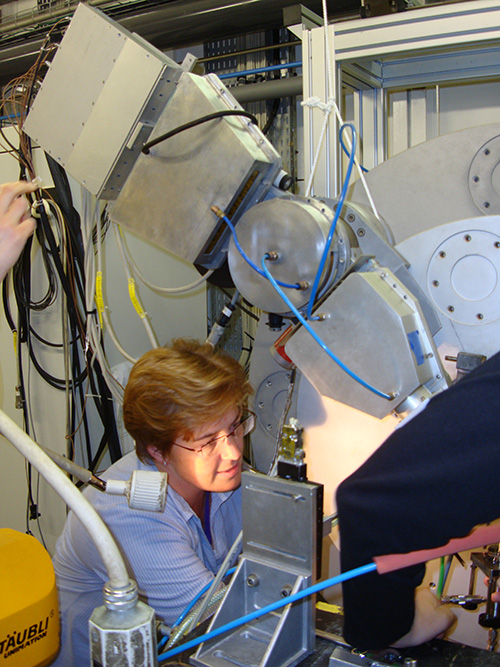- Home
- Industry
- Industry news
- Esna du Plessis,...
Esna du Plessis, scientist at Sasol: “The ESRF provided me with fundamental understanding of crystalline phases in catalysts”
10-10-2017
She is the technique leader of the X-ray and synchrotron radiation laboratory at the Analytics laboratory of Research and Technology (R&T), Sasol Group Technology. Sasol is an integrated chemicals and energy company playing to their strengths in Southern Africa and North America. Sasol produces fuel components, chemical components and co-products through their proprietary technologies. Esna conducted academic experiments at the ESRF since 2008.
Share
What challenges do you find when working with academics while you are representing industry?
Accurate, reliable and repeatable quality control is required. From an Analytics perspective it is important that we validate our methodology. Data and discussions with experts at the ESRF assist us to generate reliable results for our clients. The beamlines are constantly improving, providing results at improved resolution. Re-measurement of reference standard materials is done to calibrate our refinements and ensure accurate interpretation of the data.
How did you find out about synchrotrons?
I read about these facilities in literature and attended the 2007 “Science at synchrotrons” conference in Cape Town to learn about the various techniques available. The lectures were given by directors of synchrotron facilities and beamline scientists, with many practical examples. The most beneficial session to me was proposal writing as we could consult experts and obtain guidance to select the appropriate synchrotron technique for our scientific questions and learn how to construct a good proposal for academic beamtime. I completed the “ Advanced School on synchrotron and free-electron laser sources and their multidisciplinary applications” at ICTP, Trieste in 2008. Shortly thereafter I had an academic beamtime opportunity at the ESRF. I enjoyed the comparison of laboratory X-ray diffraction with synchrotron X-ray diffraction and ventured into total scattering (pair distribution function). Soon after that we purchased commercial beamtime.
What do you study here?
My very first measurement was powder X-ray diffraction (XRD) of reference non-commercial materials. We routinely perform in situ XRD studies using laboratory techniques. Our next academic beamtime was a succesful proposal for in situ x-ray diffraction of a model catalyst in a capillary reactor. We performed reduction experiments to study the activation of this model catalyst. Powder x-ray diffraction is one of the techniques used to characterise new and deactivated catalysts.
 |
|
Esna du Plessis on a beamline at the ESRF. |
How do you generate interest in synchrotron research in your company?
Sasol ensures continuous availability of skills to sustain our growth and the Sasol bursary scheme is an important talent lever. The South African committee of the International Union of Crystallography provides a platform to promote synchrotron opportunities for post graduate students. Furthermore Sasol scientists have the opportunity to volunteer as mentors for post-graduate students of previously disadvantaged South African Universities. I am also an industrial member of the African Lightsource committee since 2008.
What have you achieved at the ESRF?
We published results of our in situ reduction study in 2013 (PCCP) where synchrotron XRD and PDF refinements proved that the metal support interaction of the catalyst can be modeled as a phase and the chemical composition of this phase changes with increasing reduction time and temperature. The work confirmed the crystalline phases present in a model catalyst.
What is important for you, as industrial client, in terms of the service that the ESRF offers?
Industry relies on high quality data and additionally scientific support to reconstruct the data. In powder measurement the interpretation can be easily done, but 3D tomography requires algorithms to reconstruct the data and the datasets are several terabytes. This type of data manipulation, correction and reconstruction is not routine to many industrial researchers. I had the opportunity to see how the group leader Veijo Honkimaki approach the complexity of 3D phase reconstruction and I realise that excellent high resolution data requires accurate computing to provide insight and research support.
Do you think the ESRF has contributed to the new catalysts you are designing now?
Measurements at the ESRF provided me with fundamental understanding of crystalline phases in model catalysts and thereby growing the XRD and synchrotron knowledge base.
Interview by Montserrat Capellas Espuny
Top image: Esna du Plessis chatting with Ed Mitchell, head of the Business Development Office, during her last visit to the ESRF earlier this year.



